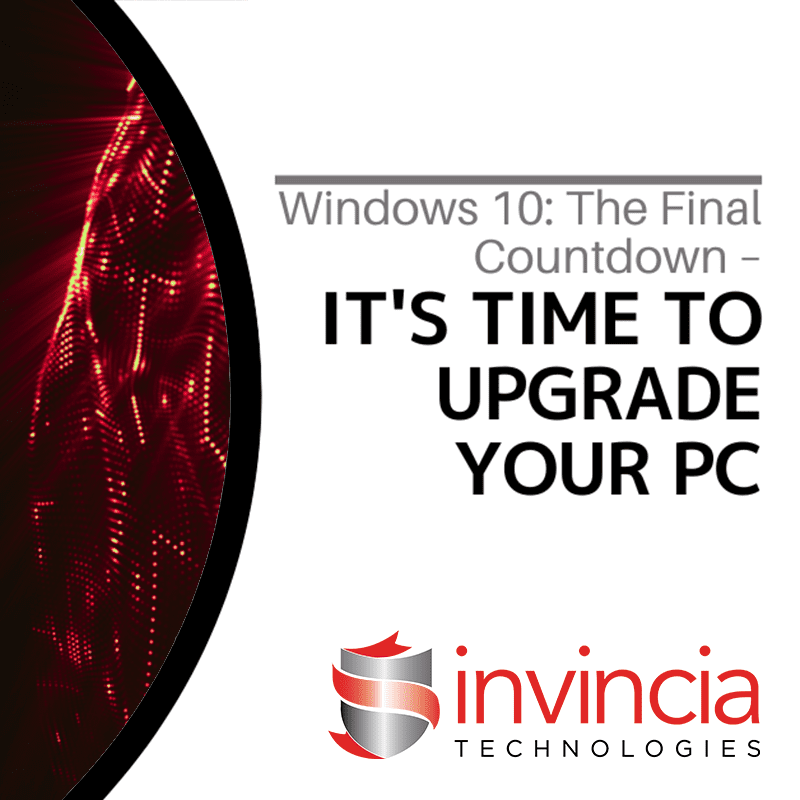Windows 10 has been a reliable operating system, but its end is near. Microsoft will cease support for Windows 10 on October 14, 2025, which means no more security updates, patches, or support. It’s time to upgrade to Windows 11, especially for businesses with multiple systems to upgrade. This upgrade is crucial not just for new features but for maintaining security, speed, and efficiency.
Why You Need to Upgrade Now
Security Concerns
Once Microsoft stops supporting Windows 10, your computer will become vulnerable to threats. Without updates, no more security patches will be provided, leaving your system open to hackers and malware. Upgrading to Windows 11 ensures you continue to receive the latest security updates, keeping your data and personal information safe.
Enhanced Performance
Windows 11 is built for better speed and efficiency, optimizing your hardware for improved performance. Whether for work, gaming, or general use, you’ll notice smoother application performance and faster boot times.
Improved Features
Windows 11 introduces new features, including a redesigned Start Menu and Taskbar for a modern look. Snap Layouts and Snap Groups help organize your workspace, while Virtual Desktops allow you to create different desktops for various tasks, enhancing productivity and your overall PC experience.
Hardware Requirements for Windows 11
Not all PCs can run Windows 11. Here are the basic requirements:
- A compatible 64-bit processor with at least 1 GHz clock speed and 2 or more cores.
- 4 GB of RAM or more.
- 64 GB of storage or more.
- UEFI firmware with Secure Boot capability.
- TPM version 2.0.
- DirectX 12 compatible graphics with a WDDM 2.0 driver.
These requirements may necessitate new hardware if your current PC doesn’t meet the specifications. Consider upgrading if needed.
Upgrading Your Computer
Opportunity to Modernize
Upgrading is a chance to modernize your PC with better processors, more RAM, and faster storage, resulting in a significant performance boost.
AI-Enabled PCs
Consider AI-enabled PCs with Copilot for advanced features powered by artificial intelligence. These machines learn your habits and optimize performance, providing a smoother and more intuitive experience.
Energy Efficiency
Modern PCs are more energy-efficient, reducing power consumption and lowering your electricity bill without compromising performance.
Benefits of Upgrading to Windows 11
Better User Interface
Windows 11 offers a cleaner, more intuitive user interface. The centered Start Menu provides easy access to frequently used apps, and the customizable Taskbar simplifies navigation.
Improved Multitasking
Snap Layouts and Snap Groups enhance multitasking by organizing open windows and tasks. Virtual Desktops allow you to separate work from personal use, boosting productivity and reducing clutter.
Integrated Microsoft Teams
Microsoft Teams is built into Windows 11, making it easy to connect with friends, family, and colleagues. You can quickly start chats or video calls from the Taskbar, perfect for remote work and staying connected.
Improved Virtual Desktops
Virtual Desktops in Windows 11 are more powerful and customizable, allowing different backgrounds for each desktop and better task organization.
What Are the Risks of Waiting to Upgrade?
Increased Vulnerability
Delaying the upgrade increases your system’s vulnerability. As Windows 10’s end-of-support date nears, the risk of security threats grows since unsupported systems won’t receive updates. Upgrading now minimizes this risk.
Potential Compatibility Issues
Software developers will eventually stop supporting Windows 10, leading to compatibility issues with new applications and updates. This can cause performance problems and lost productivity. Upgrading ensures compatibility with the latest software.
Business Disruption
Starting your upgrade now allows for a smooth rollout, upgrading one department at a time. This approach reduces potential disruptions and spreads out costs.
Avoid Last-Minute Rush
Upgrading early avoids the last-minute rush and potential delays. As the end-of-support date approaches, many users will scramble to upgrade, increasing demand for new PCs. Upgrading now ensures a smooth transition.
How to Upgrade?
Check Compatibility
First, check if your current PC meets Windows 11 requirements using the PC Health Check tool from Microsoft. This tool will confirm hardware compatibility.
Backup Your Data
Before upgrading, back up your data using an external hard drive or cloud storage to prevent data loss during the upgrade process.
Follow Upgrade Instructions
Follow Microsoft’s instructions for upgrading, which may involve downloading the Windows 11 installation file and running the setup. If your PC isn’t compatible, consider purchasing a new one that meets the requirements.
Seek Professional Help
If you’re unsure about upgrading, seek professional help. Our technology experts can ensure a smooth upgrade process and address any issues that arise.
Get Help with a Windows 11 Upgrade & Migration
The countdown to the end of Windows 10 has begun. Ensure your PC stays protected and up to date by upgrading to Windows 11. Don’t wait until the last minute—contact us today for expert guidance on a successful upgrade, avoiding future headaches.

